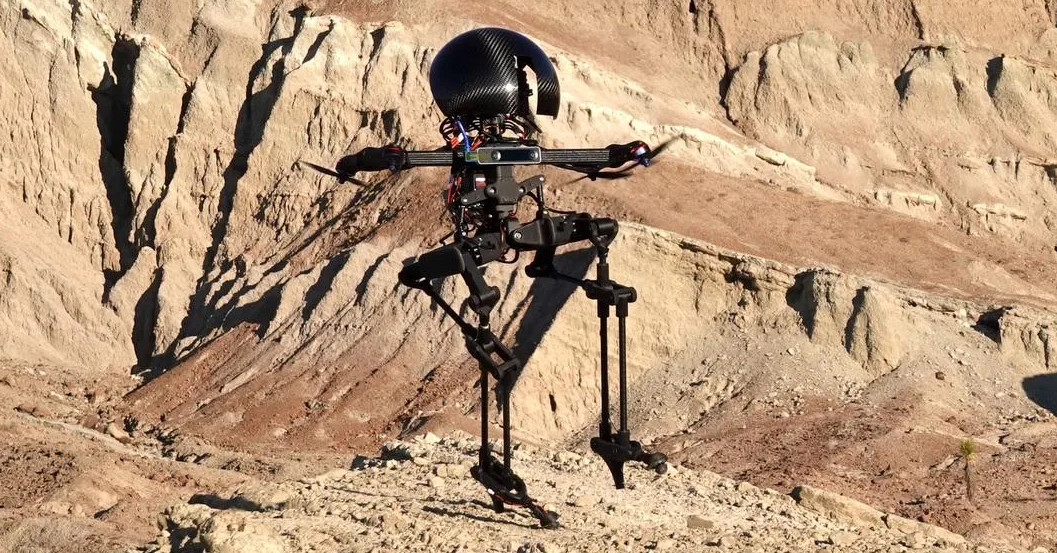When it comes to judging how cool robots are, I deploy a simple but reliable heuristic: can I imagine this machine appearing in the Metal Gear Solid franchise? With LEONARDO, a bipedal robot with propellers for arms, I can not only imagine it, I’m pretty sure it is in MGSV. From the bubble head to the uncannily precise movements, it’s just a very cool robot, which I can also imagine being used to infiltrate mercenary basecamps.
LEONARDO is a pleasingly choppy acronym for “LEgs ONboARD drOne” — the product of those linguistic geniuses in Caltech’s Aerospace Robotics and Control Lab. You may have seen an earlier iteration of the bot back in 2019 (when, amazingly, LEONARDO stood for “LEg ON Aerial Robotic DrOne” instead), but its design and capabilities have since been upgraded, adding railguns and tactical nukes. Oh, no, sorry, that’s Metal Gear Solid again.
According to an interview with Caltech’s Professor Soon-Jo Chung at IEEE Spectrum, 2021’s LEO (for short) has been re-built from scratch, with lighter legs, double the number of propellers, and a new integrated design that places the battery and electronics onboard. The bot is now 75cm tall (2.5 feet), weighs 2.5kg (5.5lbs), and can fly at speeds of up to 3m/s.
The interesting thing about LEO, of course, is its hybrid design: it can both fly and walk. These aren’t distinct modes of travel, either, as the propellers help stabilize the robot during tricky bipedal movements. The end-result is that the bot can not only hop and walk but skateboard and slackline, skills that are beyond the remit of this particular biped.
This multimodal approach means that LEO would, potentially, be able to move through environments that challenge other bots. Soon-Jo Chung tells IEEE Spectrum that one potential application is in high-altitude environments, like inspecting high voltage lines or tall bridges. “In such applications, conventional biped robots have difficulties with reaching the site, and standard multi-rotor drones have an issue with stabilization in high disturbance environments,” says the professor. LEO, of course, can do both.
:no_upscale()/cdn.vox-cdn.com/uploads/chorus_asset/file/22920262/Screen_Shot_2021_10_12_at_12.32.07_PM.png)
You won’t be seeing LEO tackle these problems in the near-future, though. It’s still very much a research project, and there are a number of design challenges before LEO could be put to commercial use. Foremost among these is perhaps battery life, as the bot can only currently operate for 100 seconds of flight or 3.5 minutes of walking before it needs to have a sit down and recharge. I’m much the same myself, but thankfully I don’t have a job inspecting high-altitude power lines either.
For more information on LEO, you can check out this blog post from Caltech or a paper on the machine published in Science Robotics.
Credit: Source link





















